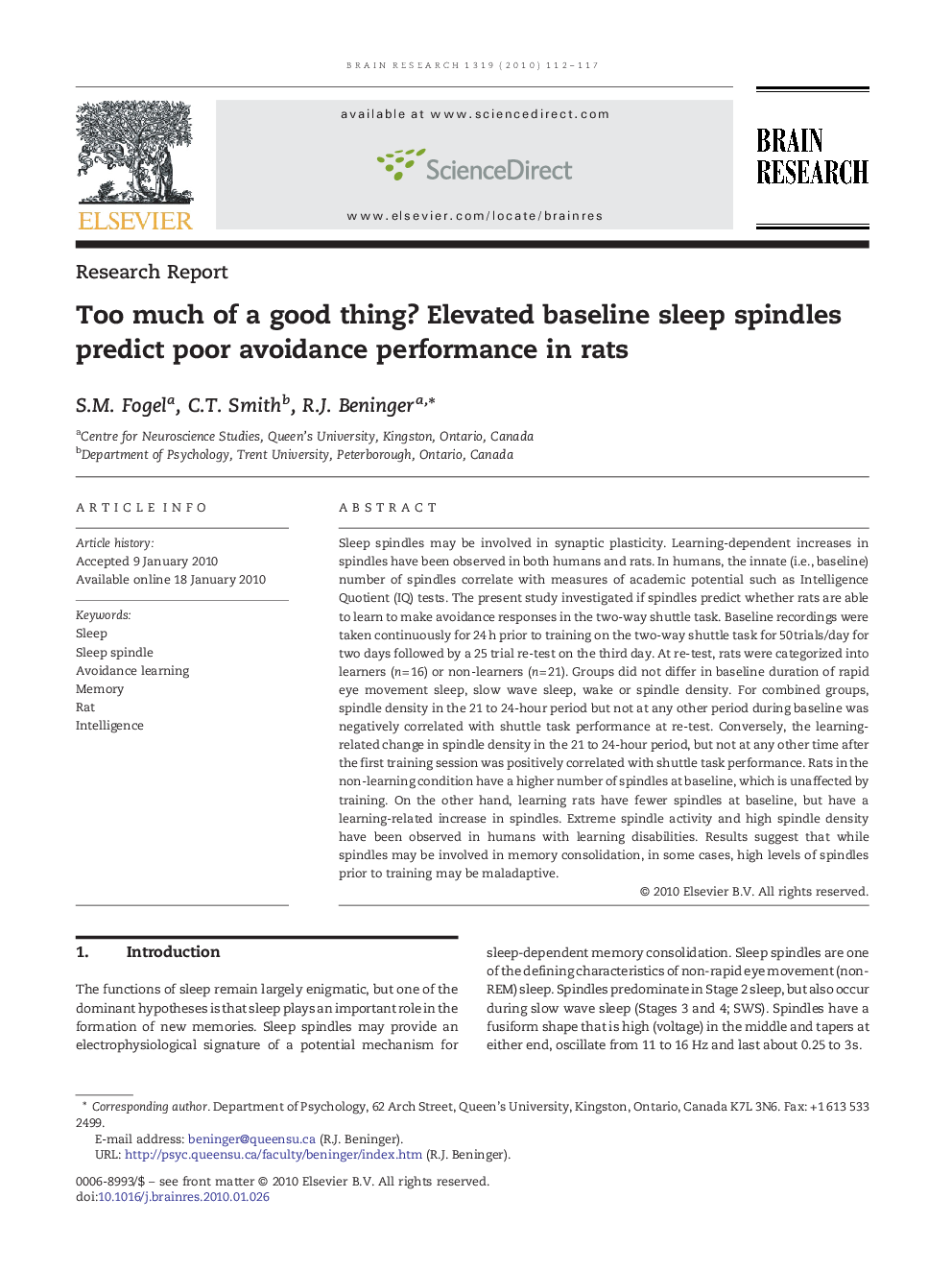| Article ID | Journal | Published Year | Pages | File Type |
|---|---|---|---|---|
| 4327357 | Brain Research | 2010 | 6 Pages |
Sleep spindles may be involved in synaptic plasticity. Learning-dependent increases in spindles have been observed in both humans and rats. In humans, the innate (i.e., baseline) number of spindles correlate with measures of academic potential such as Intelligence Quotient (IQ) tests. The present study investigated if spindles predict whether rats are able to learn to make avoidance responses in the two-way shuttle task. Baseline recordings were taken continuously for 24 h prior to training on the two-way shuttle task for 50 trials/day for two days followed by a 25 trial re-test on the third day. At re-test, rats were categorized into learners (n = 16) or non-learners (n = 21). Groups did not differ in baseline duration of rapid eye movement sleep, slow wave sleep, wake or spindle density. For combined groups, spindle density in the 21 to 24-hour period but not at any other period during baseline was negatively correlated with shuttle task performance at re-test. Conversely, the learning-related change in spindle density in the 21 to 24-hour period, but not at any other time after the first training session was positively correlated with shuttle task performance. Rats in the non-learning condition have a higher number of spindles at baseline, which is unaffected by training. On the other hand, learning rats have fewer spindles at baseline, but have a learning-related increase in spindles. Extreme spindle activity and high spindle density have been observed in humans with learning disabilities. Results suggest that while spindles may be involved in memory consolidation, in some cases, high levels of spindles prior to training may be maladaptive.
